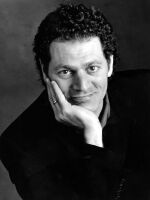The first Thanksgiving was celebrated in 1621. The first known instance of a composer ordering up plucking violins came just three years later. To musician and NPR cultural commentator Miles Hoffman, that's no coincidence.
"A little too close, I think," Hoffman tells Morning Edition's Bob Edwards. "You think this is an accident? No, this is not. The Pilgrims had something to do with it."
This Thanksgiving, Hoffman stops by NPR's Studio 2A to demonstrate "plucking" on his viola and to offer musical samples of the technique.
"This is for people who prepare their turkeys from scratch, who actually pluck their turkeys," Hoffman quips. "See, this is plucking music."
Musical Excerpts Heard in this Story
1. "Plink, Plank, Plunk," Leroy Anderson, composer. Leonard Slatkin, St. Louis Symphony Orchestra, RCA Victor.
2. "2nd Movement of String Quartet in F Major" by Maurice Ravel, Juilliard String Quartet, Sony Classics.
3. (Harp solo) "Whirlwind," from Five Preludes for Harp by Carlos Salzedo. Harpist: Mariko Anraku, EMI Classics.
4. "Caprice No. 24" by Niccolo Paganini, Performer: Midori, CBS Records.
5. "Adams County Breakdown," Johnson Mountain Boys, from Blue Ribbon Banjo, EasyDisc Records.
Pizzicato
Below is the lowdown on the musical plucking technique known as pizzicato, from The NPR Classical Music Companion by Miles Hoffman:
Pizzicato is the Italian word for "plucked." To play pizzicato on a stringed instrument (such as the violin, viola, cello, or double bass) means to make the notes sound by plucking the strings with the fingers rather than by using the bow. The word may be used as an adjective, as in "Those notes should be pizzicato"; as an adverb, as in "Those notes should be played pizzicato"; or as a noun, as in the name for the technique itself. The term is not associated with instruments that are always plucked, such as the harp and the guitar.
To play pizzicato, the player generally uses the index finger (and sometimes the middle finger or thumb) of the right hand, the hand that holds the bow. For extended pizzicato passages it's sometimes convenient to put down the bow, but usually the player keeps it in his hand while plucking. Pizzicato passages may be fast or slow, loud or soft. In addition, the player can produce different kinds of sounds by varying the specific manner in which he plucks the strings. Plucking with the fingernail, for example, will give a sound that is much harder, or "nastier," than plucking with the fleshy part of the fingertip, and plucking at different points along the string will cause the string to resonate in different ways. A stiff finger versus a flexible finger will also change the sound, and even the direction or manner of follow-through will have an effect.
In the nineteenth century, as part of his ongoing commitment to violinistic R and D — razzle and dazzle — the Italian virtuoso violinist and composer Niccolo Paganini (1782-1840) developed the technique of left-hand pizzicato. This technique requires simultaneous fingering and plucking of notes with the left hand, and usually involves throwing in bowed notes in rapid alternation with those that are plucked. The twentieth-century composer Bela Bartok (1881-1945) was the first composer to call for a "snap" pizzicato, so named because the string is plucked so violently that it snaps back against the fingerboard. A snap pizzicato is sometimes called a "Bartok" pizzicato.
Composers since the Baroque period (ca. 1600-1750) have used pizzicato to provide color and contrast in their works. And they've used it often, whether for gentle accompaniments to arias or instrumental melodies (sometimes in imitation of a guitar or harp), resonant countermelodies or rhythmic punctuations, percussive effects, or flashy displays. In his Fourth Symphony, Peter Ilyich Tchaikovsky (1840-1893) included one movement where the strings play only pizzicato for the entire movement, and the effect is extraordinary.
A word on notation: Pizzicato is one Italian musical term that is never translated. When a composer wants a note or notes plucked, the universal indication is the abbreviation pizz. And how does the performer know when to resume playing with the bow? Again, the Italian indication is universal: arco, meaning "bow."
From The NPR Classical Music Companion by Miles Hoffman, copyright 1997 by Miles Hoffman and National Public Radio. Reproduced by permission of Houghton Mifflin Company. All rights reserved.
Copyright 2022 NPR. To see more, visit https://www.npr.org.



